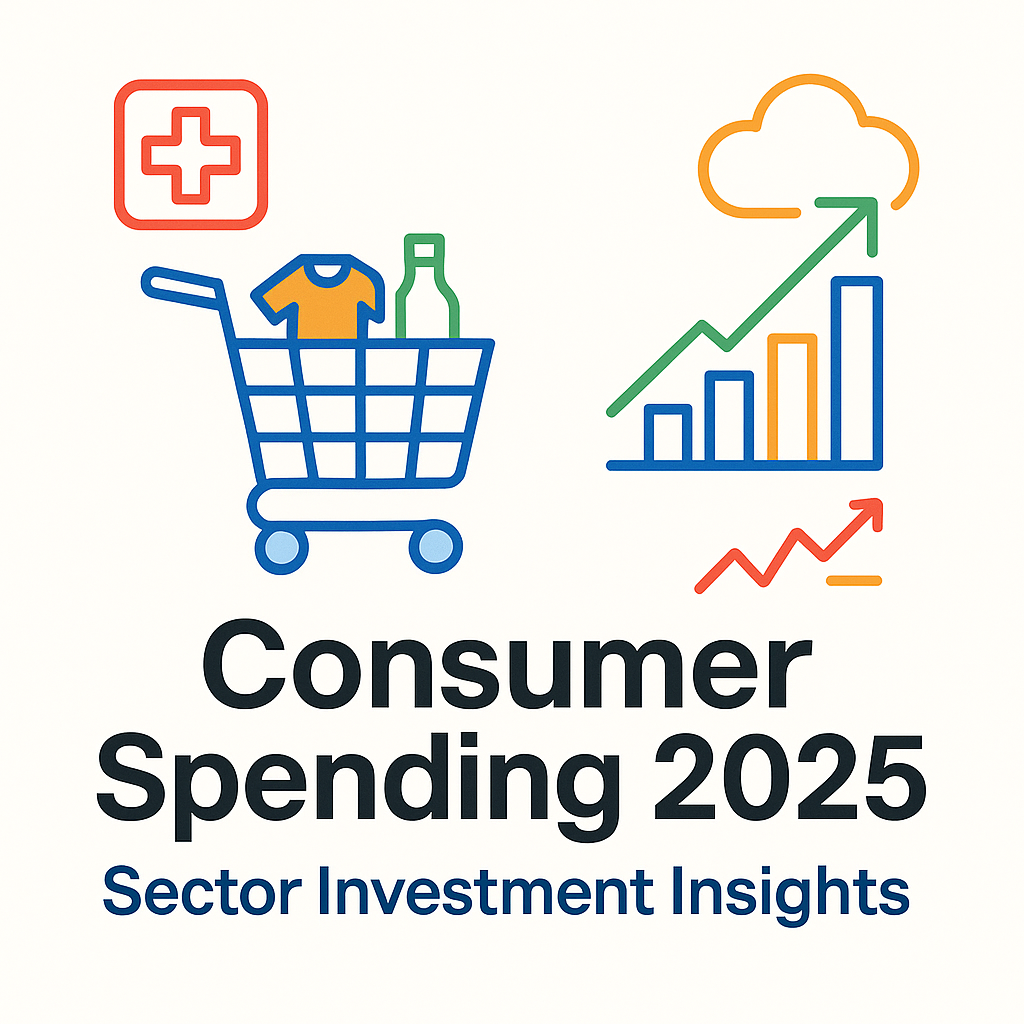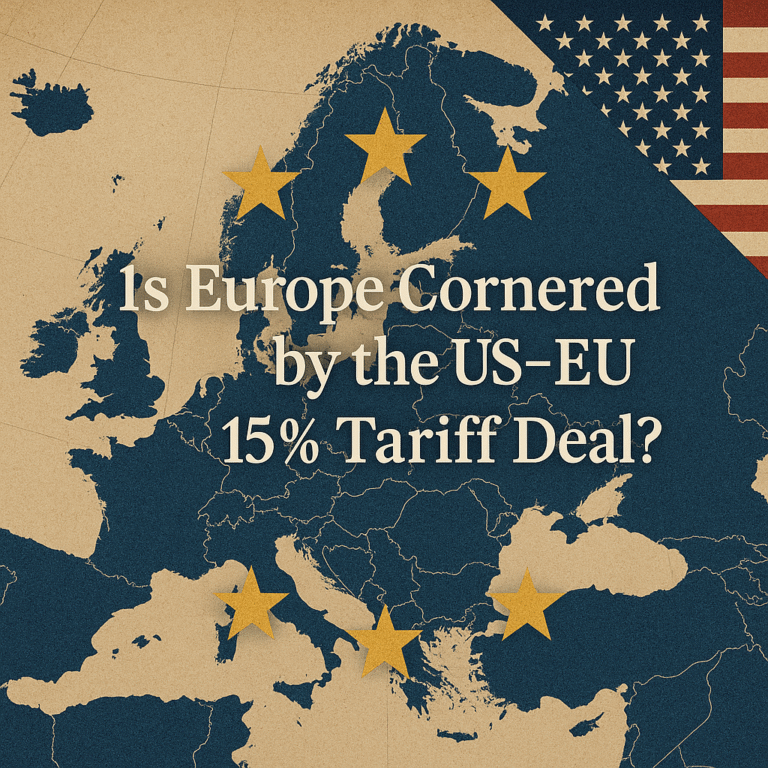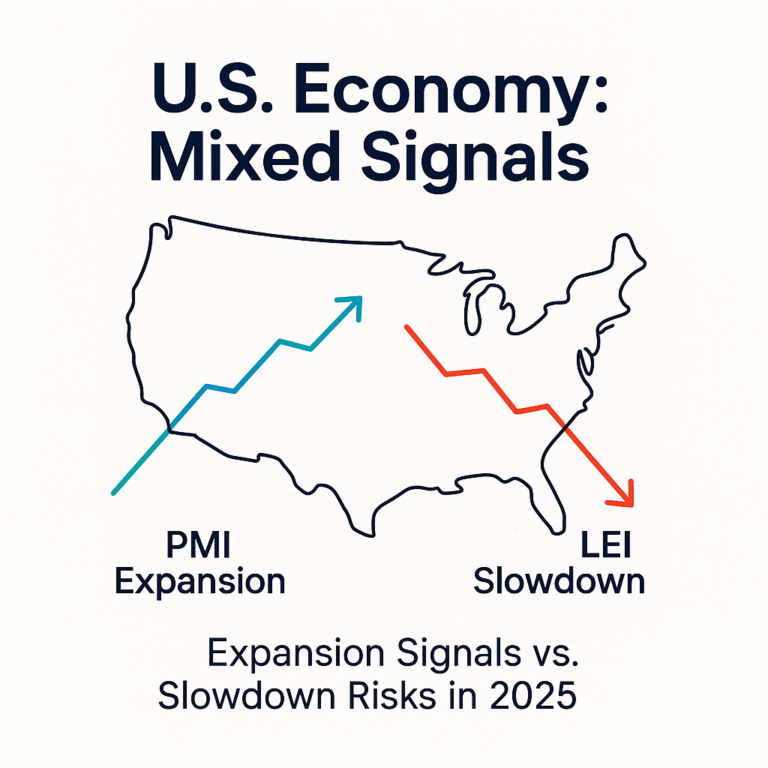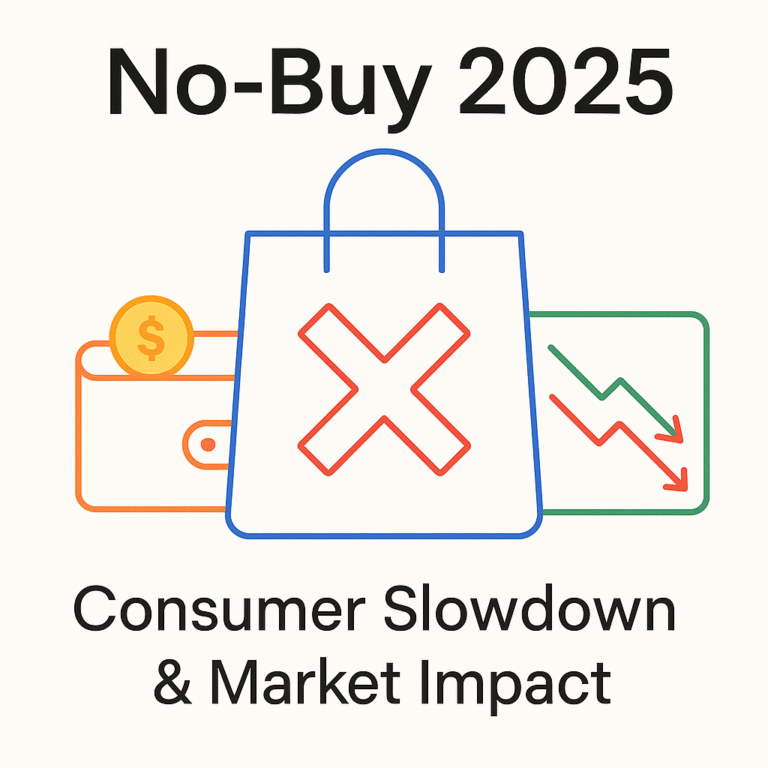U.S. Consumer Spending Trends 2025: How Shifting Patterns Create Sector Investment Opportunities
Discover how U.S. consumer spending trends in 2025 are shifting and what these changes mean for sector-specific stock and ETF investment opportunities.
Key Takeaways
✔ U.S. consumer spending rose 0.6% in August 2025, showing resilience
✔ Durable goods spending is slowing, while services remain strong
✔ Healthcare and staples stand out as defensive investments
✔ Fintech, AI, and cloud infrastructure are structural growth plays
✔ Consumer spending data releases remain key inflection points for investors
U.S. consumer spending trends in 2025 are shaping both economic forecasts and sector investment opportunities. In August, consumer spending rose 0.6% from the prior month, underscoring resilience in household demand. Since consumption represents nearly two-thirds of GDP, changes in spending patterns carry heavy weight for both economic growth and financial markets.
The real question is not simply whether spending is rising, but where consumers are directing their budgets. Understanding these shifting consumer spending patterns helps investors position for sector-specific opportunities. This article explores the latest data and highlights which sectors are most likely to benefit—or struggle—under these evolving dynamics.
How U.S. Consumer Spending Shapes Economic Growth
Consumer spending trends 2025 play a central role in the economy. Services make up more than half of all consumption and have been a key driver of GDP. In Q2 2025, U.S. GDP growth was revised upward to 3.8% annually, largely supported by robust spending activity (BEA).
Durable goods spending, however, serves as a leading indicator due to its sensitivity to interest rates. Deloitte and Morgan Stanley both suggest that durable goods spending may slow in the second half of 2025, reflecting tighter household budgets (Deloitte, Morgan Stanley).
Recent Data on Consumer Spending Trends 2025
- Personal Consumption Expenditures (PCE) rose 0.6% in August 2025 (Reuters).
- Services spending increased 0.5%, led by travel, leisure, and dining.
- Goods spending rose 0.8%, though autos and appliances showed weaker demand.
- Morgan Stanley projects overall consumer spending growth to cool to 3.7% in 2025, compared to 5.7% in 2024 (Morgan Stanley).
- McKinsey surveys indicate 75% of consumers are “trading down” to cheaper alternatives, a clear sign of shifting spending behavior (McKinsey).
These numbers highlight that while overall spending remains strong, consumer behavior is changing beneath the surface.
Sector Impacts of Shifting Spending Patterns
Services: Leisure, Travel, and Dining
Experience-driven spending continues to grow. Airlines, hotels, and restaurants are beneficiaries of these consumer spending patterns. Still, these industries are highly cyclical and vulnerable to downturns.
Healthcare and Pharma: Defensive Spending Strength
Healthcare remains resilient across economic cycles. Aging demographics and chronic illnesses add long-term growth potential. However, regulatory risks around drug pricing remain.
Financial Services and Fintech: Payments and BNPL Growth
Rising transaction volumes drive gains for banks, insurers, and digital platforms. “Buy Now, Pay Later” (BNPL) services are expanding into essentials like groceries, creating structural growth opportunities. But rising credit risk could impact weaker players (BNPL Overview).
Consumer Staples: Stability Amid Slowdowns
Spending on essentials such as food, hygiene, and household goods remains steady during downturns. Companies with strong brands and efficient supply chains can better manage rising input costs.
Technology, Infrastructure, and Cloud: Digital Consumption Growth
Digitalization fuels demand for cloud services, AI infrastructure, and e-commerce platforms. While valuations are high, these industries remain long-term growth drivers.
Sector Comparison Table
|
Sector |
Strengths |
Risks |
Investment Strategy |
|---|---|---|---|
|
Services (Leisure, Dining) |
Experience-driven demand |
Economic downturn risk |
Focus on strong balance sheets |
|
Healthcare & Pharma |
Defensive, aging demographics |
Regulation, pricing risks |
Long-term hold |
|
Financials & Fintech |
Payments, BNPL expansion |
Credit risk |
Favor digital payment leaders |
|
Consumer Staples |
Demand resilient in downturns |
Input cost pressures |
Invest in brand leaders |
|
Technology & Cloud |
AI and digital growth |
High valuations |
Target growth leaders |
Macroeconomic and Policy Implications
Stronger consumer spending trends 2025 could slow the Fed’s rate cuts. With inflation pressures still present, policymakers may move cautiously (NY Post).
Meanwhile, rising credit card balances and BNPL adoption highlight consumer leverage risks. Fiscal policies like tax relief or subsidies could boost confidence, while budget tightening may dampen sentiment.
The structural shift from offline retail to online platforms continues, benefiting e-commerce players, cloud providers, and digital infrastructure firms.
What’s Next: Outlook and Investor Watchpoints
Analysts expect consumer spending to cool in late 2025. Slower job growth, rising costs, and policy uncertainty remain the biggest risks.
Key factors investors should monitor:
- Input and shipping costs pressuring consumer goods companies
- Fed interest rate decisions and fiscal policy swings
- Sudden shifts in consumer sentiment tied to the labor market
U.S. consumer spending trends in 2025 remain resilient, but patterns are shifting. Investors should balance defensive sectors like healthcare and staples with growth-oriented plays in fintech and cloud infrastructure. Monitoring monthly spending data and Fed policy will be essential to identify sector inflection points.
References
- Bureau of Economic Analysis (BEA), GDP and Spending Data: bea.gov
- Reuters, U.S. Consumer Spending August 2025: reuters.com
- Morgan Stanley, Consumer Spending Trends 2025: morganstanley.com
- Deloitte, U.S. Economic Forecast 2025: deloitte.com
- McKinsey, U.S. Consumer Behavior Analysis: mckinsey.com
- NY Post, Fed Inflation Gauge Coverage: nypost.com
- Wikipedia, BNPL Overview: en.wikipedia.org







